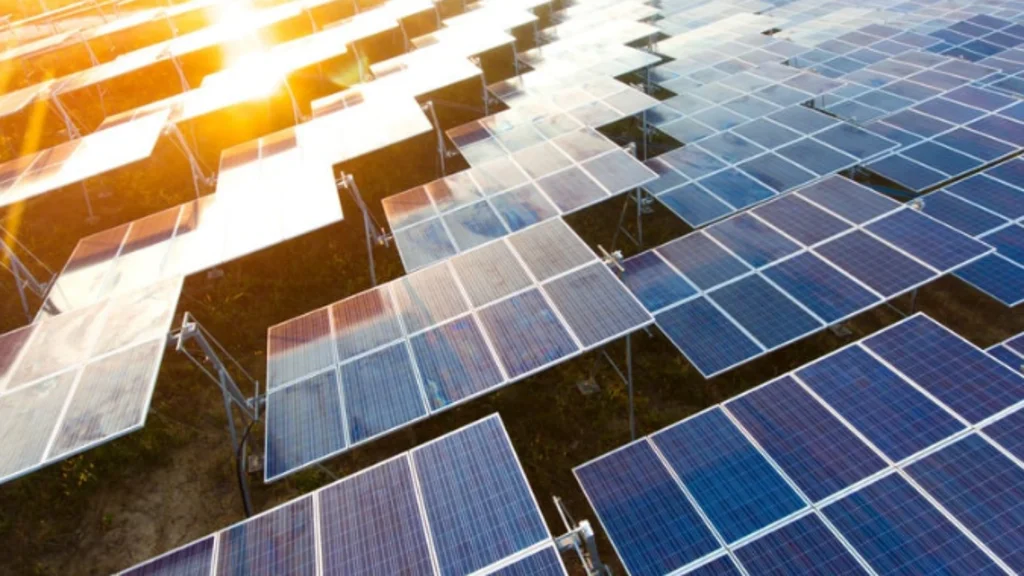Is your energy bill climbing month after month? You’re not alone. Across the United States, homeowners are turning to residential solar as a way to take control of their electricity costs, reduce their carbon footprint, and potentially increase property value.
As of 2025, the U.S. federal solar tax credit (ITC) still allows homeowners to deduct 30 percent of the cost of installing solar panels from their federal taxes, making solar adoption more financially accessible than ever. Add to that local incentives and net metering programs, and it’s easy to see why solar isn’t just a trend — it’s becoming the new normal.

What Makes Up a Home Solar System?
A home solar system is more than just panels on a roof. At its core, a residential system consists of:
- Residential Solar panels that capture sunlight and convert it into direct current (DC) electricity
- An inverter that transforms DC into alternating current (AC) to power your home
- Optional battery storage that stores excess power for night use or outages
- A monitoring system that tracks production and consumption data
- Mounting structures and wiring that safely secure and connect components
From experience, we’ve seen that choosing the right inverter is often overlooked. For example, one homeowner in Arizona upgraded to a smart solar inverter after struggling with inconsistent power delivery during peak hours. The switch enabled remote monitoring and improved efficiency balancing, resulting in daily system losses reduced by 5 to 7 percent.
Installing 12 volt solar panels for home use isn’t a one-size-fits-all process. Your roof angle, local weather, and shading all impact system design. That’s why working with certified installers is essential.
How Much Does Residential Solar Cost in 2025?
The most common question homeowners ask is: What’s it going to cost me?
The average residential solar system in 2025 ranges from 2.50 to 3.50 dollars per watt installed. This means:
- A 6 kW system (suitable for a medium-sized household) typically costs 15,000 to 21,000 dollars before incentives
- With the 30 percent federal tax credit, that drops to 10,500 to 14,700 dollars
Additional factors that influence cost include:
- Roof material and pitch
- Battery storage inclusion
- Electrical upgrades, if needed
While the upfront cost may seem high, many homeowners report a solar energy return on investment (ROI) of 5 to 8 percent, often breaking even within 10 to 15 years. In sunny states like California, Arizona, and Florida, the payback period can be even shorter.
Real-World Solar Performance: What Affects Your Output?
You might have heard that a 400-watt panel guarantees a consistent 400 watts of power. But in real-world conditions, that’s rarely the case.
Several factors impact your solar panel efficiency:
- Dirt and debris can reduce efficiency by up to 20 percent over time
- Shade from trees or structures affects panel performance
- Roof orientation matters, with south-facing roofs performing best in the northern hemisphere
- Malfunctioning inverters silently sap power
A Nevada homeowner once noticed their production had dropped nearly 15 percent in six months. A routine check revealed that several panels were covered in thick dust and bird droppings. After a simple cleaning, production rebounded immediately. This highlights how rooftop solar maintenance, even just twice a year, can preserve thousands of kilowatt-hours over the system’s lifetime.

Battery Storage and Off-Grid Possibilities
Adding solar battery storage for home use has become one of the biggest trends in residential solar. Batteries allow you to store excess energy generated during the day and use it at night or during grid outages.
Popular battery systems in 2025, like Tesla Powerwall, Enphase IQ Battery, and LG Chem, offer:
- 10 to 15 kilowatt-hours usable capacity
- Time-based control for peak-hour usage
- Smart integration with inverters and mobile apps
While batteries increase upfront costs, they can add resilience to your system, especially in areas with unreliable power or frequent power outages. If you’re considering an off-grid solar system, batteries become essential.
Grid-tied systems still dominate the market due to their lower cost and the ability to sell excess energy back to the utility. However, hybrid systems that combine solar, battery, and grid connectivity offer the flexibility to operate with or without grid support.
For example, a couple in rural Texas recently upgraded to a hybrid setup after experiencing repeated power outages. Their off-grid solar system now runs well water pumps, refrigerators, and essential lighting, ensuring comfort even when storms knock out local utilities.
EV Integration: Charging Your Car with Home Solar
As EV adoption grows, more homeowners are looking to power their cars with solar. With the proper setup, it’s entirely feasible to charge your electric vehicle using your home solar system.
Here’s what you’ll need:
- A Level 2 EV charger installed at home
- A solar system sized to handle the added demand, about 2 kW extra for moderate EV use
- A smart solar inverter with EV integration support
Let’s say you drive 30 miles per day. That translates to about 9 kilowatt-hours of energy. Your solar panels can easily produce that, especially in sunny climates. One EV owner in Los Angeles reported saving over 1,000 annually by charging their vehicle with solar instead of grid power.
Incorporating EV charging doesn’t just reduce your fuel costs — it increases the overall return on your residential solar investment.
Common Mistakes Homeowners Make and How to Avoid Them
Solar is mighty, but mistakes during design or installation can result in subpar outcomes. Some of the most common pitfalls include:
- Oversizing the system, which can reduce ROI if your utility limits net metering credits
- Poor inverter placement in direct sunlight, causing overheating and reduced lifespan
- Skipping shading analysis, which can cause long-term efficiency loss
- Ignoring warranties and installer credentials
When selecting the best solar panels for your home, pay attention to more than just panel wattage. Look at degradation rates, manufacturer warranties, and smart tech compatibility.

Maintenance Tips to Maximize Your System’s Lifespan
Your solar system is a long-term investment. Proper upkeep ensures it continues delivering value for 25 years or more.
Here are practical rooftop solar maintenance tips to follow:
Clean your panels regularly. Dust, leaves, and bird droppings can lower efficiency by up to 20 percent. In most regions, cleaning twice a year, in spring and fall, is sufficient.
“We cleaned our panels for the first time in 10 months and immediately saw a 12 percent production increase,” says a homeowner in Bakersfield, California.
Use soft brushes and distilled water, or hire a professional if your roof is difficult to access.
Monitor Residential Solar system performance. Most inverters offer dashboards that allow you to track real-time output. Sudden dips may point to inverter or panel issues.
Inspect hardware annually. Inspect the inverter for loose wiring, cracks, corrosion, and signs of overheating.
Schedule a professional checkup every 2 to 3 years. Installers can test components, verify voltage, and ensure everything meets safety standards. For systems with batteries, this is critical for long-term performance and safety.
Click here : Rv solar panels kits.
Final Thoughts: Is Residential Solar Right for You?
If you’re a homeowner with decent roof exposure, stable income, and a desire for energy independence, solar is likely one of the smartest home upgrades you can make in 2025.
From cutting your electricity bill by 70 percent or more, to charging your EV for free, to ensuring backup power during blackouts, solar offers more than just savings. It offers freedom.
That said, not every home is a perfect candidate. North-facing roofs, excessive shade, or structural challenges may reduce your ROI. Always request a personalized site analysis before making a commitment.
Still, for most homeowners, the combination of tax credits, performance tech, and long-term payback makes solar energy for homeowners a wise move in today’s energy landscape.

Schedule Your Free Residential Solar Checkup
If your panels haven’t been cleaned in over three months, or your energy bills haven’t dropped as expected, you could be losing 10 to 20 percent of your energy output.
Let an expert evaluate your system, assess the health of your inverter, and determine whether it’s time to upgrade your battery or expand your setup.
Book a system checkup today and start maximizing the full potential of your solar investment.
FAQs
How big is the US residential solar market?
As of 2025, the U.S. solar market is valued at over $20 billion and growing steadily, with over 4 million homes equipped with solar panels. Continued tax incentives and energy cost concerns are fueling rapid expansion.
How much does a 5 kW solar system cost in the USA?
A typical 5 kW solar system costs between $12,500 and $17,500 before incentives. With the 30% federal tax credit, that drops to around $8,750 to $12,250.
Is US Solar a real company?
Yes, US Solar is a legitimate solar energy developer focused on community solar and residential solutions. They operate across several U.S. states and offer both subscription-based and ownership models.
What country has the most solar?
Australia leads the world in residential adoption per capita, with over 30 percent of homes using solar power. Germany and the U.S. follow closely in total installations.
Which state has the most solar?
California has the highest number of residential system installations in the U.S., by a wide margin. Its sunshine, high utility rates, and progressive policies make it a national leader in solar adoption.











